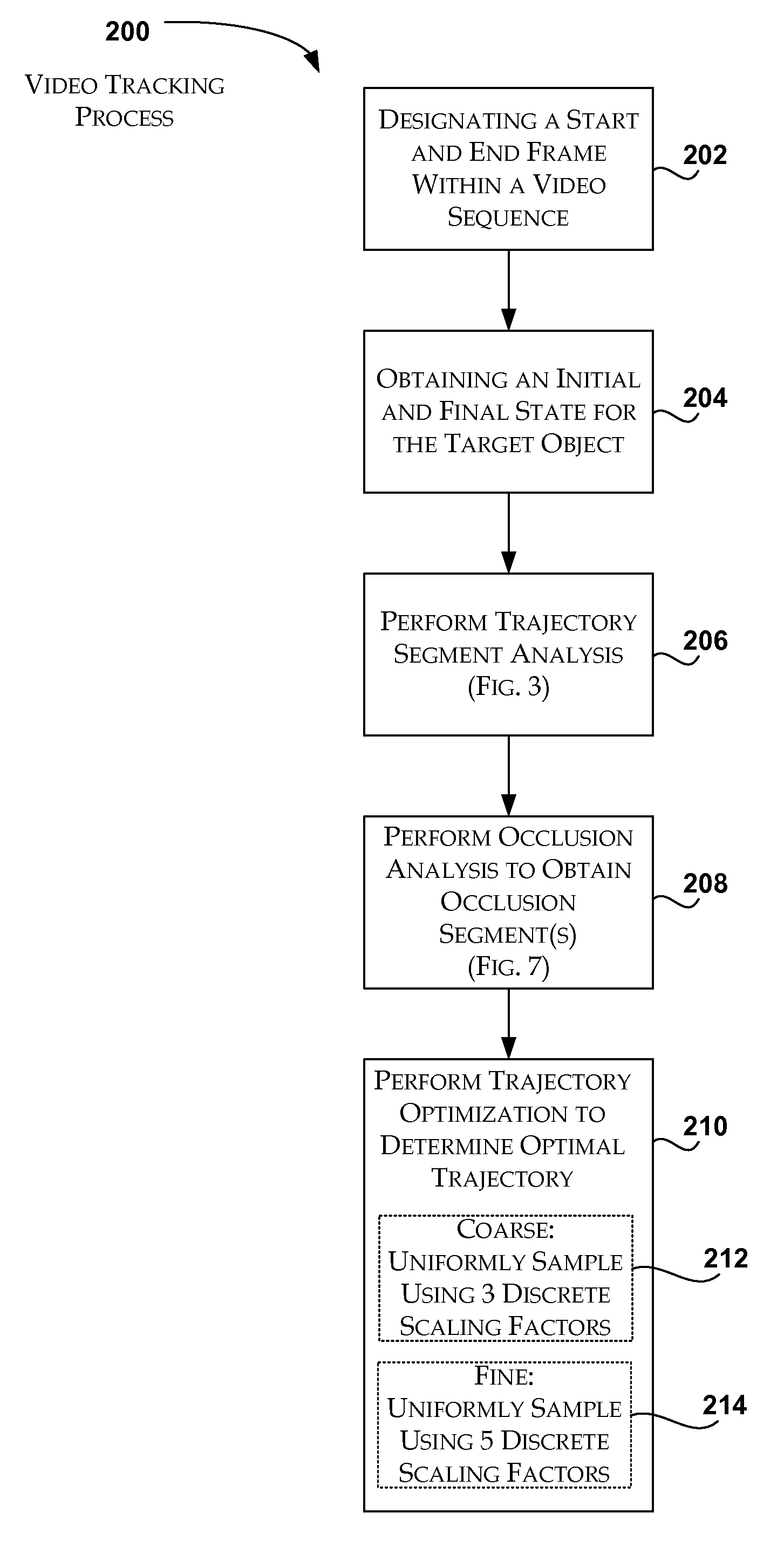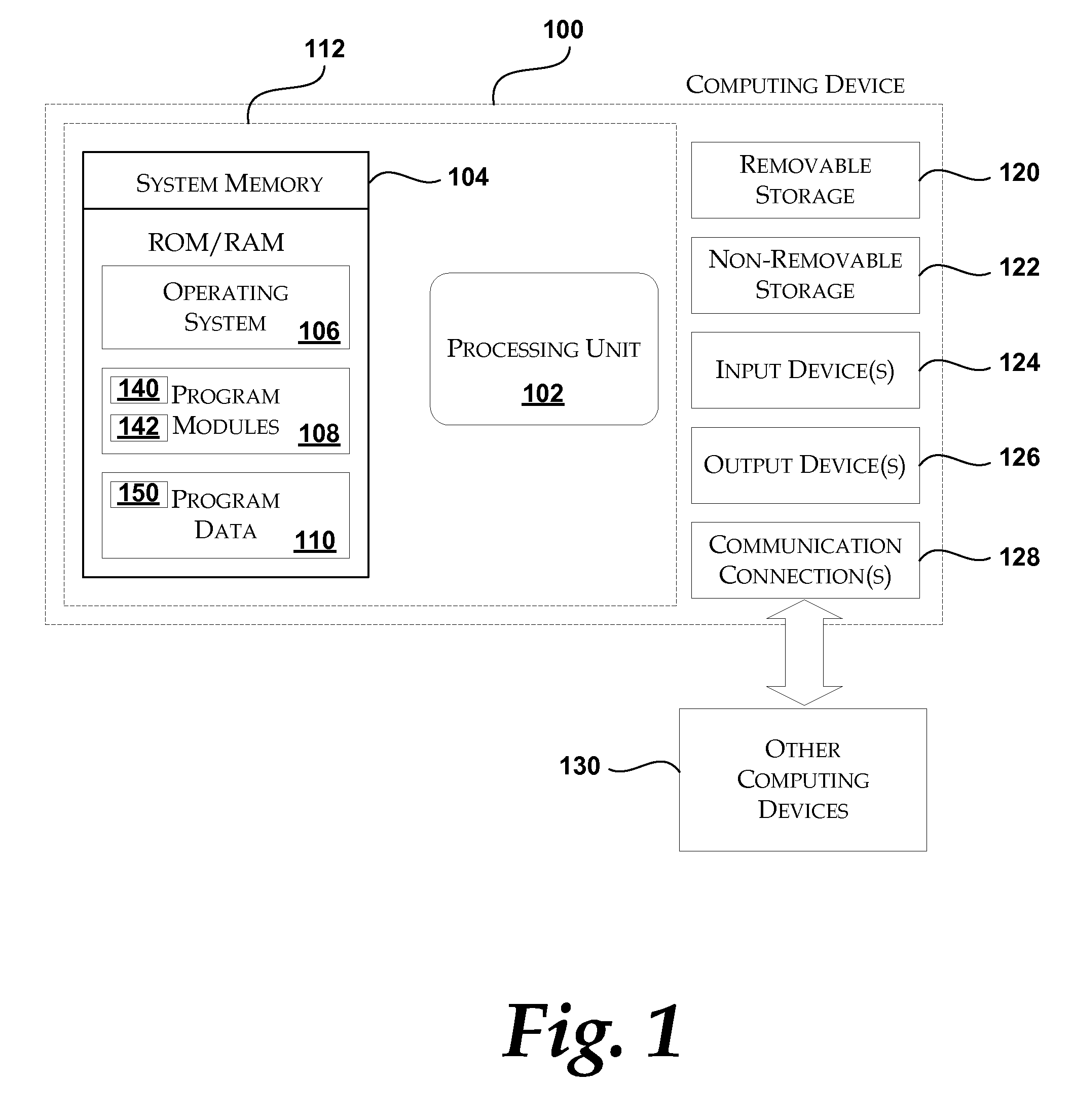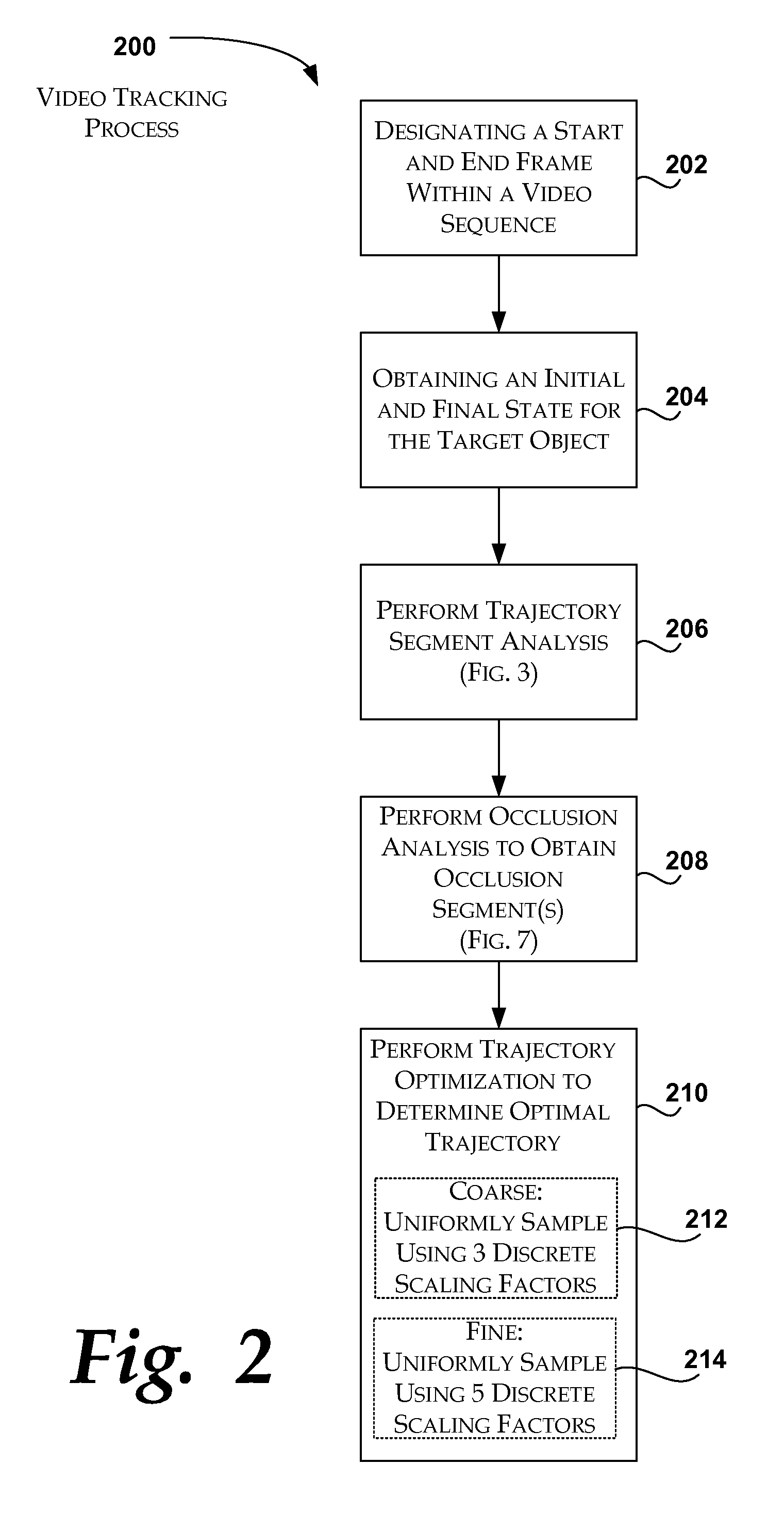Bi-Directional Tracking Using Trajectory Segment Analysis
a segment analysis and bi-directional tracking technology, applied in image analysis, instruments, computing, etc., can solve the problems of visual tracking techniques having difficulty tracking target objects, visual tracking techniques having difficulty, etc., to achieve optimal trajectory of target objects and minimize the whole sequence state space
- Summary
- Abstract
- Description
- Claims
- Application Information
AI Technical Summary
Benefits of technology
Problems solved by technology
Method used
Image
Examples
Embodiment Construction
[0021] The following description is directed at a video tracking technique that outputs a maximum a posterior (MAP) solution for a target object based on two object templates obtained from a start and an end keyframe of a whole state sequence. In overview, the technique first minimizes the whole state space of the sequence by generating a sparse set of local two-dimensional modes in each frame of the sequence. The two-dimensional modes are converted into three-dimensional points within a three-dimensional volume. The three-dimensional points are clustered using a spectral clustering technique where each cluster corresponds to a possible trajectory segment of the target object. If there is occlusion in the sequence, occlusion segments are generated so that an optimal trajectory of the target object can be obtained. The present video tracking technique handles sudden motion, ambiguity, and short / long periods of occlusion. These and other aspects of the present video tracking technique...
PUM
 Login to View More
Login to View More Abstract
Description
Claims
Application Information
 Login to View More
Login to View More - R&D
- Intellectual Property
- Life Sciences
- Materials
- Tech Scout
- Unparalleled Data Quality
- Higher Quality Content
- 60% Fewer Hallucinations
Browse by: Latest US Patents, China's latest patents, Technical Efficacy Thesaurus, Application Domain, Technology Topic, Popular Technical Reports.
© 2025 PatSnap. All rights reserved.Legal|Privacy policy|Modern Slavery Act Transparency Statement|Sitemap|About US| Contact US: help@patsnap.com



